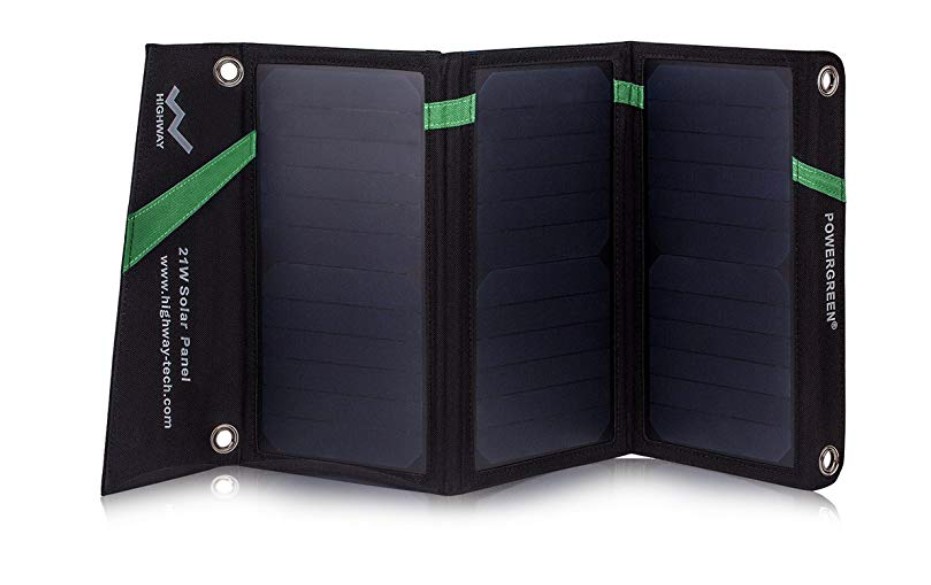PowerGreen 21W Review
Our Verdict
Our Analysis and Test Results
The biggest draw of the PowerGreen 21W panel is its design. From the materials used for its construction, mainly the PET Polymer faced panels (which are incredibly durable) to the thoughtful, roomy storage pocket, the 21W is easy to use. On the downside, the PowerGreen is the heaviest set-up in our testing fleet.
Performance Comparison
Charge Interruption Recovery
The 21W by PowerGreen did not quite stand up to the other large panels in our fleet. Initially, the PowerGreen charged up our battery to 3%, just as the other larger capacity panels did. But, once we had interrupted the steady flow of sunlight to the solar cells, the panel had trouble reconnecting to the battery that was plugged into it. The battery wasn't charging at all after the panel had been in the shade, and we had to unplug and re-plug it back in to establish a sound connection. Some panels have technologies built in that will read the input and re-adjust accordingly, and that makes their recovery faster.
Charging Speed
Charging speed was another category where the PowerGreen narrowly missed the performance level of the other two large capacity panels. After one hour of charging our 1byone 6,000 mAh external battery pack, the PowerGreen had only charged the battery to 13%. This is a fairly large difference, especially when we checked again after three hours; the PowerGreen was still almost 10% behind the other large-capacity panels we tested. This lag played a significant role in the PowerGreen's overall score since keeping a phone or battery charged is the main job of these devices.
Multiple Device Charging Speed
When we plugged in two of our test batteries to the 21W, the panel slowed down considerably in delivering power to both batteries. This is normal since suddenly, each USB port is pulling half the total wattage of the panel, making it seem like they are each essentially plugged into a 7-10W panel. This slows down the charging a great deal, but some models recover better than others. The 21W was able to maintain a charge to both batteries but failed to actually increase the charge on either. Some panels could not consistently supply power to the batteries; this caused the battery to continually disconnect and reconnect, rather than receive a steady flow of power.
Durability
The 21W panel's greatest attributes are its design. The panel is burly and can withstand wind, light rain, and sand (of course, as with anything, to an extent!). If you like hanging your panels up to receive sunlight, the PowerGreen has sturdy, re-enforced grommets. The durable canvas and PET Polymer coating on the cells makes the PowerGreen especially durable, and we didn't run into any issues with the pocket wearing or the fabric wearing out along the fold lines.
Weight & Portability
Generally speaking, the larger the wattage, the heavier the panel. With this in mind, it's not surprising that 21W is one of the heaviest in our fleet. Many of the foldable panels we tested end up being about the same size as the PowerGreen when folded, but the PowerGreen weighs in higher on the scale.
Value
This panel is a great budget option. For the price, it has a careful design and high powered solar cells. That said, spending just a hair more will get you a more efficient panel that will charge your devices faster and more effectively.
Conclusion
The PowerGreen 21W has lots of bells and whistles that make an aesthetically appealing purchase; however, after further research, we didn't find it was all it cracked up to be. Since the PowerGreen boasts 21W, it's somewhat efficient, but still struggled to charge two batteries effectively. It also lagged in the race to charge our battery pack. For these reasons, we found that there are better options if you're looking for a panel of this capacity.








